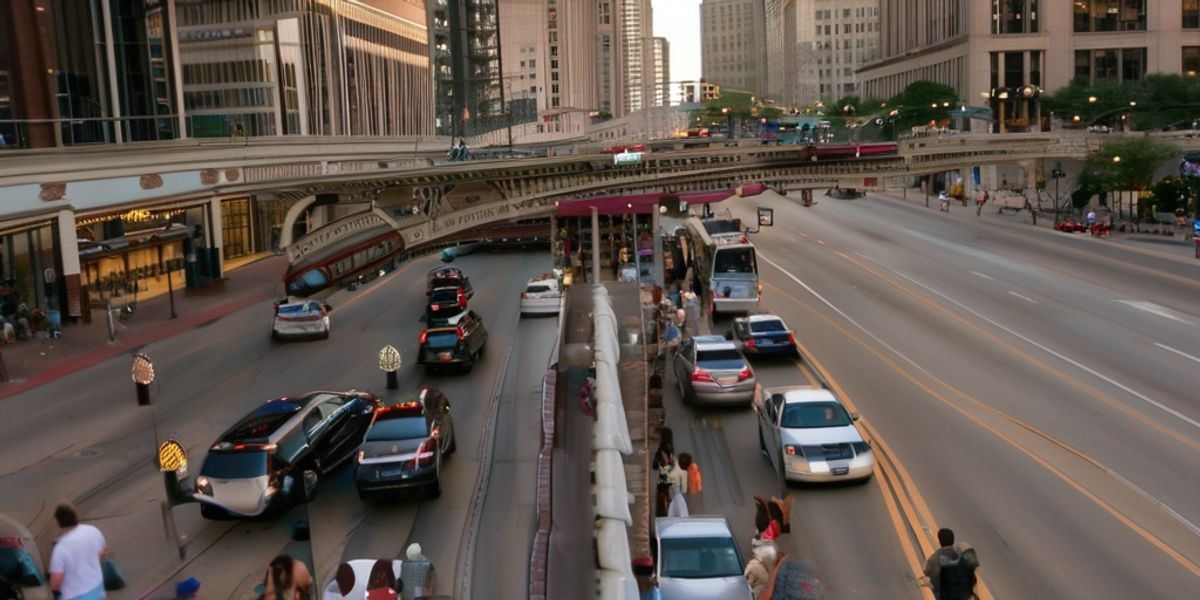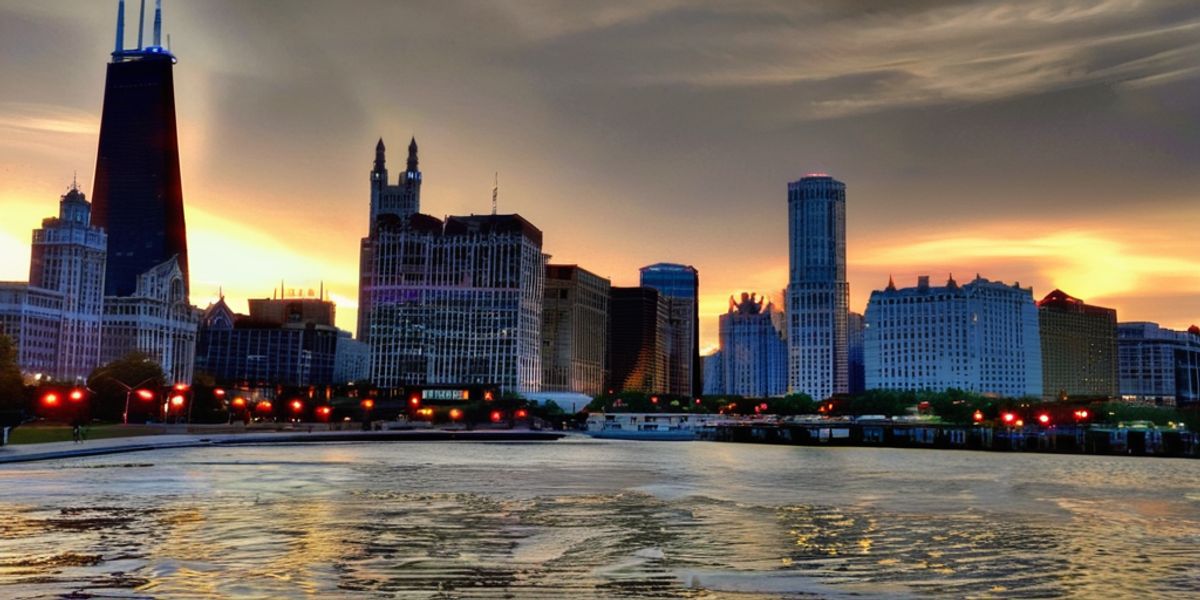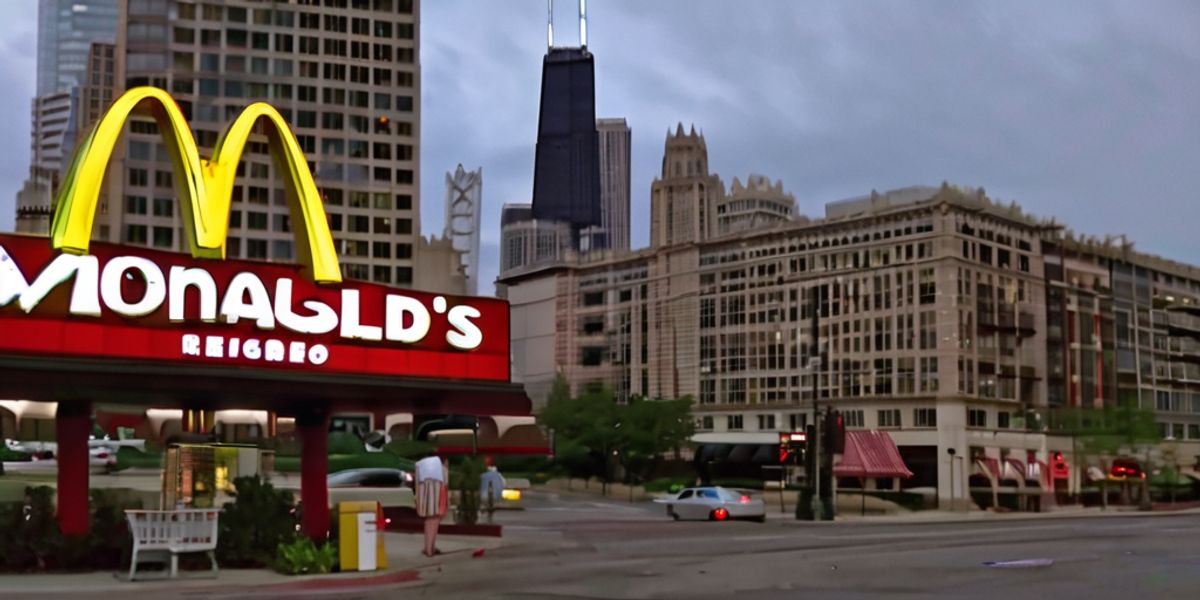Chicago, the largest city in Illinois, is a vibrant metropolis with a population of 2,665,039. Known for its rich history, ethnic diversity, and economic significance, Chicago is a city of neighborhoods, each with its own character and charm. As a hub for finance, technology, and education, Chicago attracts a dynamic mix of residents and visitors alike. This article delves into the demographic dynamics and real estate landscape of this bustling urban center.
Key Takeaways
- Chicago’s population boasts a diverse ethnic composition, with a significant Hispanic community and a variety of ancestries including German, Irish, and Polish.
- With a high percentage of residents holding at least a bachelor’s degree, Chicago is a well-educated city that offers a range of opportunities for young, upwardly-mobile professionals.
- The real estate market in Chicago features expensive properties, influenced by the city’s strong computer and math industries, and includes popular neighborhoods like Wicker Park and Lincoln Park.
Demographic Dynamics of Chicago

Ethnic Diversity and Ancestry
Chicago’s tapestry of ethnicities makes it a microcosm of global diversity. The city’s residents hail from a myriad of racial and ethnic backgrounds, with the majority identifying as White, followed by Black or African-American. A significant Hispanic or Latino presence enriches the cultural landscape, comprising nearly 29% of the population.
The city’s ancestry palette is equally diverse, featuring German, Irish, Polish, Italian, and English roots. This melting pot of ancestries contributes to Chicago’s unique cultural identity and social fabric. Recent census data also highlights a growing recognition among residents of Native American heritage and calls for the inclusion of Middle Eastern/North African categories to better represent the community’s demographics.
Chicago’s diversity is not just a statistic; it’s a living, evolving entity that shapes the city’s character and its approach to community building and inclusivity.
The following table summarizes the key ethnic groups and their approximate percentages in Chicago’s population:
| Ethnicity | Percentage of Population |
|---|---|
| White | Majority |
| Black or African-American | Second Largest Group |
| Hispanic or Latino | 28.95% |
| Other | Growing Recognition |
Educational Attainment and Income Levels
Chicago boasts a significant proportion of well-educated residents, with 42.43% of adults holding at least a bachelor’s degree, surpassing the national community average of 21.84%. This educational attainment reflects in the city’s income levels, where the per capita income was $45,840 in 2018, suggesting a comfortable lifestyle for a family of four with an annual income of $183,360.
However, the economic landscape is diverse, with areas of affluence and pockets of poverty. The city’s median household income stands at $70,211, with a growth rate of 3.2%. Educational facilities contribute to this dynamic, with institutions ranging from neighborhood schools to specialized magnet and International Baccalaureate (IB) programs.
Chicago’s educational ecosystem, coupled with its economic diversity, paints a complex picture of the city’s social fabric. The presence of high-tech employment at 2.5% indicates a burgeoning sector that may influence future educational and income trends.
The table below encapsulates key educational and income statistics for Chicago:
| Metric | Value |
|---|---|
| Adults with Bachelor’s Degree | 42.43% |
| Per Capita Income (2018) | $45,840 |
| Median Household Income | $70,211 |
| Household Income Growth | 3.2% |
| High-Tech Employment | 2.5% |
Data sourced from U.S. Census and other relevant studies as of October 2019.
Language and International Influence
Chicago’s linguistic landscape is as diverse as its population, with English being the predominant language. However, the city’s international influence is evident in the variety of languages spoken by its residents. Spanish and Chinese are significant languages in Chicago, reflecting the city’s vibrant immigrant communities.
According to recent data, approximately 20.24% of Chicago’s residents were born outside of the United States, contributing to the city’s rich tapestry of languages and cultures. This diversity is not only present in the city’s neighborhoods but also in educational institutions, such as the Lycée Français de Chicago, which cater to a multilingual community.
Chicago’s population decline has economic, resource, and diversity impacts. Consider alternative cities like Austin, Denver, Seattle, or Charlotte.
The following table provides a snapshot of the linguistic diversity in one of Chicago’s neighborhoods, Lincoln Square, showcasing the range of languages spoken:
| Language | Presence in Lincoln Square |
|---|---|
| English | Predominant |
| Spanish | Common |
| Chinese | Notable |
| German | Present |
| French | Present |
| Japanese | Present |
Population Trends and Migration
Chicago’s population dynamics have been a subject of intense study and discussion, particularly in light of recent census data. The city’s growth rate has been notably low, with the U.S. Census Bureau reporting an increase of only 0.1% from July 2020 to July 2021. This period marked the pandemic’s first year, a time when migration patterns were significantly disrupted.
Despite national trends suggesting a population decline, Illinois experienced an unexpected uptick in its numbers. The state’s population grew to 13 million, an increase that was initially overlooked due to an undercount. This revelation underscores the complexity of tracking migration and population changes.
The demographic shifts in Chicago are not solely defined by numbers but also by the diverse backgrounds of its residents. The city continues to be a mosaic of cultures, with new migrants adding to its rich tapestry.
The following table highlights key statistics related to Chicago’s population and job market as of 2019:
| Metric | Value |
|---|---|
| Job Growth (2018) | 0.9% |
| Projected Annual Job Growth | 0.6% |
| Unemployment Rate | 3.9% |
| Median Household Income | $70,211 |
| Household Income Growth | 3.2% |
| High-Tech Employment | 2.5% |
These figures, while pre-pandemic, provide a snapshot of the economic backdrop against which population trends are unfolding. The city’s ability to attract and retain residents is closely tied to its economic health, which is reflected in job growth and income levels.
Real Estate and Living in Chicago

Housing Market Overview
The housing market in Chicago reflects the city’s diverse economy, which thrives across sectors such as healthcare, transportation, and business. This economic vitality is mirrored in the real estate landscape, with a range of options to suit various income levels. The market’s dynamics are influenced by the city’s cultural diversity, with a vibrant event calendar that includes festivals, concerts, and cultural events throughout the year.
According to sources like Moody’s Analytics and Sperling’s BestPlaces, the affordability index for Chicago as of October 2019 stood at a value where a family with median income could qualify for a mortgage on a median-priced home. This suggests a balanced market for potential homebuyers.
Chicago’s real estate market is not only about the numbers; it’s about the lifestyle and opportunities that come with living in such a culturally rich and economically diverse city.
For those considering a move to Chicago, it’s important to understand the nuances of the market. Here’s a quick overview of the affordability index:
| Affordability Index | Description |
|---|---|
| 100 | Median income family can afford a median-priced home |
| Above 100 | Family has surplus income for a median-priced home |
The real estate market is ever-evolving, and staying informed is key to making a wise investment or finding the perfect neighborhood to call home.
Popular Neighborhoods for Professionals
Chicago’s landscape is a mosaic of neighborhoods, each with its own character and appeal for professionals. The Gold Coast, Streeterville, and River North stand out as prime locations for those seeking a vibrant urban lifestyle close to business centers, cultural amenities, and nightlife.
- Gold Coast: Historic charm with luxury apartments and townhouses.
- Streeterville: High-rise living with proximity to the Magnificent Mile and waterfront.
- River North: Trendy lofts and galleries amidst a bustling restaurant scene.
The most expensive neighborhoods, often synonymous with desirability for professionals, include DePaul Southeast and Lincoln Park Northeast. Here’s a snapshot of the top areas:
| Rank | Neighborhood | Notable Features |
|---|---|---|
| 1 | DePaul Southeast | Proximity to university, upscale housing |
| 2 | Lincoln Park Northeast | Parks, boutiques, and eateries |
| 3 | W Melrose St / N Lakewood Ave | Quiet residential area with green spaces |
| 4 | W Wisconsin St / N Mohawk St | Exclusive townhomes, historic district |
| 5 | Gold Coast South | Beach access, luxury retail |
While the allure of these neighborhoods is undeniable, it’s important for professionals to consider their lifestyle preferences and commute when choosing a place to call home in Chicago.
Real Estate Near Chicago
The allure of living near Chicago is undeniable, with its vibrant culture and economic opportunities. Suburbs around the city offer a diverse range of housing options, catering to different lifestyles and preferences. Brookfield, Evergreen Park, and Oak Park are among the popular choices for those looking to stay connected to Chicago while enjoying the benefits of suburban life.
- Brookfield, IL
- Evergreen Park, IL
- Forest Park, IL
- La Grange, IL
- Oak Lawn, IL
- Oak Park, IL
- River Forest, IL
- Riverside, IL
- Westchester, IL
The proximity to Chicago’s bustling center means residents can enjoy the best of both worlds: a quieter, suburban atmosphere coupled with easy access to the city’s amenities.
Real estate in these areas remains a competitive market, reflecting the desirability of living near one of the largest cities in the United States. The ZIP codes ranging from 60601 to 60610 encompass a variety of neighborhoods, each with its unique character and appeal. Whether one is looking for the historic charm of Riverside or the family-friendly environment of La Grange, the real estate near Chicago offers something for everyone.
Impact of Technology and Math Industries on Housing
The influence of the technology and math industries on Chicago’s housing market is significant. Chicago’s tech sector has created a surge in demand for housing, particularly in areas close to tech hubs and innovation districts. This demand has led to a rise in property values and a competitive market for buyers and renters alike.
Chicago’s high-tech employment rate stands at 2.5%, with a notable concentration of individuals working in computers and math. This demographic shift has contributed to the city’s real estate landscape, with a higher risk of housing market decline in Illinois, alongside states like California and New Jersey.
| Metric | Chicago | National Average |
|---|---|---|
| Median Household Income | $70,211 | – |
| Household Income Growth | 3.2% | – |
| High-Tech Employment | 2.5% | – |
The real estate market in Chicago is adapting to these changes, with new developments and housing projects aiming to cater to the influx of tech professionals.
As the city continues to attract tech talent, the impact on housing extends beyond just prices. It influences the types of homes being built, the amenities offered, and the overall character of neighborhoods. The trend is a double-edged sword, providing economic growth but also challenging affordability for long-time residents.
Conclusion
In summary, Chicago stands as a vibrant and diverse metropolis, home to over 2.6 million residents. Its rich history is reflected in its historic housing stock and the cultural tapestry of its neighborhoods. The city’s ethnic diversity, with significant White, Black, Hispanic, and other communities, contributes to its dynamic social fabric. With a strong economic foundation in finance, engineering, publishing, and food processing, and a gross metro product of $545.3B, Chicago offers ample opportunities for both businesses and professionals. Despite challenges such as population decline in Cook County and disparities in wealth, the city’s high level of education and the concentration of young, educated, career-oriented residents make it an attractive destination for singles and families alike. Real estate in Chicago, while expensive, is sought after, reflecting the city’s appeal as a hub of opportunity and cultural richness.
Frequently Asked Questions
What is the population of Chicago?
As of the latest data, Chicago has a population of 2,665,039 people.
What are some of the most popular neighborhoods for professionals in Chicago?
Popular neighborhoods for professionals in Chicago include DePaul, Museum Campus, Wicker Park, Lincoln Park, Millennium Park, East Village, River West, Fulton Market/West Loop, Lakeview, and Bucktown.
How does the ethnic diversity of Chicago affect its culture?
Chicago is extremely ethnically diverse, with a significant Hispanic population and residents reporting ancestries like German, Irish, Polish, Italian, and English. This diversity enriches the city’s culture, seen in its cuisine, festivals, and community events.



